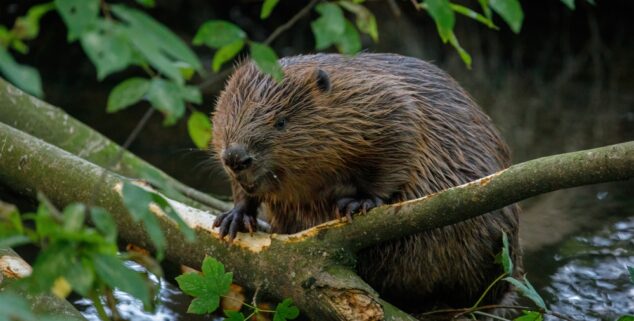Opinion
Beavers are our partners in protecting and restoring California
 Image by Vaclav Matous
Image by Vaclav MatousOPINION – If you’re like us, you’re inspired by the natural world and eager to see California’s beautiful mountains, forests, and lakes protected for future generations. You also might be surprised to hear that the health and survival of these places depends on one species more than most: beavers. Put simply, beavers are our partners in protecting and restoring California.
Beavers are known as a “keystone species,” meaning they create, modify, and maintain critical ecosystems for insects, birds, mammals, fish, plants, and trees. In fact, 50% of North America’s threatened or endangered species are highly dependent upon beavers for their survival. Beavers primarily live in riparian areas such as rivers, wetlands, and mountain meadows, areas which are similarly known as “keystone ecosystems.” When these habitats are healthy and thriving, this has disproportionate benefits for other ecosystems too. As a result, preserving riparian areas can have an outsized impact on conservation efforts locally and statewide.
As the state works to meet its goal of protecting 30% of lands and coastal waters by 2030 (30×30), we urge leaders to prioritize protections for riparian and beaver habitats. Scientists worldwide agree that the 30×30 target is a critically needed step to help prevent the most severe climate change impacts worldwide and avoid ecosystem collapse.
This work is increasingly urgent given that beaver habitat is deeply threatened – it’s estimated that we’ve lost 90% of California’s riparian areas and historical wetlands. Climate change worsens these impacts for everyone, as we experience longer drought periods and more intense wildfires followed by unprecedented flooding.
Protecting beavers is a win-win for advancing 30×30 and reducing some of climate change’s most extreme impacts. In mountain meadows, beavers help enhance carbon sequestration. In wetland areas with thriving beaver populations, their dams help reduce the speed of a stream by allowing water to slow, spread, and sink into the ground. This conserved moisture can halt wildfire and make it more difficult for fires to spread. It also provides an oasis for wildlife and plants and helps increase water supply during periods of drought.
Wetlands provide important filtration processes for drinking water, as well. Freshwater wetlands are known as “Earth’s kidneys” because they can filter toxic fertilizers and metals from streams and prevent algae blooms. By permanently protecting more wetlands, we can help ensure our drinking water remains clean and safe to drink.
We can also take steps to promote coexistence between beavers and humans. The California Department of Fish and Wildlife recently awarded a $2 million grant to the Occidental Arts and Ecology Center for a first-ever program supporting beavers’ coexistence with landowners. This program will help provide educational and financial resources for landowners to help mitigate beaver impacts (such as flooding) and promote better management. We hope the state will continue investing in beaver and human coexistence as part of its climate efforts.
We are in an important moment in California’s history, with strong momentum to address the intertwined climate and biodiversity crises. Last year the state’s 30×30 effort was codified into law. At the same time, the Supreme Court stripped countless wetlands of federal protections. We have less than six years to reach our goal of protecting 30% of our lands and coastal waters by 2030, and that will require consistent, ongoing investment.
We’re encouraged by legislation like Assemblymember Laura Friedman’s AB 2875, which would require California to ensure no further wetlands are lost, and Assemblymember Damon Connolly’s AB 2196, which seeks to codify the work of the state’s Beaver Restoration Program at the California Department of Fish and Wildlife. Both bills already passed the Assembly Water, Parks, and Wildlife committee with bipartisan support.
As we continue to work towards 30×30, we urge our state’s leaders to prioritize protections and state budget allocations for wetlands and riparian areas, as well as beaver habitats. With the help of this important species, we can address many of the impacts of climate change, from wildfires to drought and the need for clean drinking water.
Kate Lundquist and Brock Dolman are Co-Directors of the Watershed Advocacy, Training, Education, & Research (WATER) Institute and the Bring Back the Beaver Campaign at the Occidental Arts & Ecology Center.
Want to see more stories like this? Sign up for The Roundup, the free daily newsletter about California politics from the editors of Capitol Weekly. Stay up to date on the news you need to know.
Sign up below, then look for a confirmation email in your inbox.

Leave a Reply